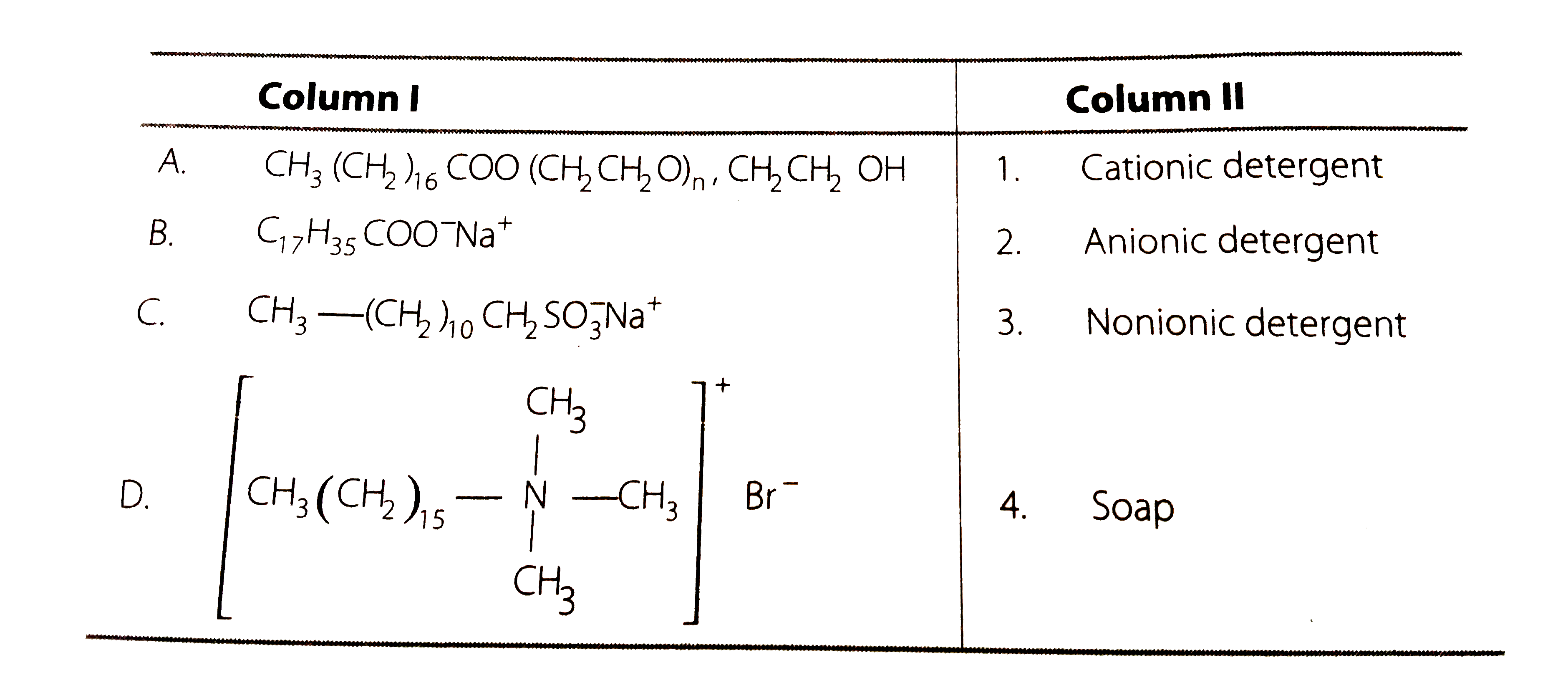Match the polymers given in Column-I with the type of linkage present in them given in Column-II.

Text Solution
(i→b),(ii→d),(iii→a),(iv→d),(v→c)
|
Topper's Solved these Questions
- POLYMERSBOOK - KUMAR PRAKASHANCHAPTER - POLYMERSEXERCISE - SECTION - D (NCERT EXEMPLAR SOLUTION) (ASSERTION AND REASON TYPE)
7 Videos
- POLYMERSBOOK - KUMAR PRAKASHANCHAPTER - POLYMERSEXERCISE - SECTION - D (NCERT EXEMPLAR SOLUTION) (LONG ANSWER TYPE QUESTIONS)
5 Videos
- POLYMERSBOOK - KUMAR PRAKASHANCHAPTER - POLYMERSEXERCISE - SECTION - D (NCERT EXEMPLAR SOLUTION) (SHORT ANSWER TYPE QUESTIONS)
18 Videos
- HALOALKANES AND HALOARENESBOOK - KUMAR PRAKASHANCHAPTER - HALOALKANES AND HALOARENESEXERCISE - SECTION - E Multiple Choice Questions
260 Videos
- SAMPLE QUESTION PAPER BOOK - KUMAR PRAKASHANCHAPTER - SAMPLE QUESTION PAPER EXERCISE - [PART-B] SECTION - C
2 Videos
Similar Questions
Knowledge Check
Observe the table given below and match the reaction given in column I with the type of reaction given in column II.
 A(A)-(I), (B) - (IV), (C) - (II),(D)-(III)B(A)- (I), (B) - (IV), (C) - (III), (D) - (II)C(A)- (II), (B) - (IV): (C) - (III), (D) - (I)D(A)- (I), (B) - (IV), (C) - (I), (D) - (III)
A(A)-(I), (B) - (IV), (C) - (II),(D)-(III)B(A)- (I), (B) - (IV), (C) - (III), (D) - (II)C(A)- (II), (B) - (IV): (C) - (III), (D) - (I)D(A)- (I), (B) - (IV), (C) - (I), (D) - (III)
Match the activity given in Column I with the type of pollution created by it given in Column II.


View SolutionMatch the activity given in Column I with the type of pollution created by it given in Column II.

View SolutionMatch the complex given in Column-I with the oxidation state of cobalt present in it (given in Column_II)

View SolutionMatch the example given in Column I with the type of colloid given in Column II.

View SolutionMatch structures given in Column I with the type of detergents given in Column II.

View SolutionMatch structures given in Column I with the type of detergents given in Column II.

View SolutionMatch the reactions given in Column I with the types of reactions given in Column II.

View Solution
